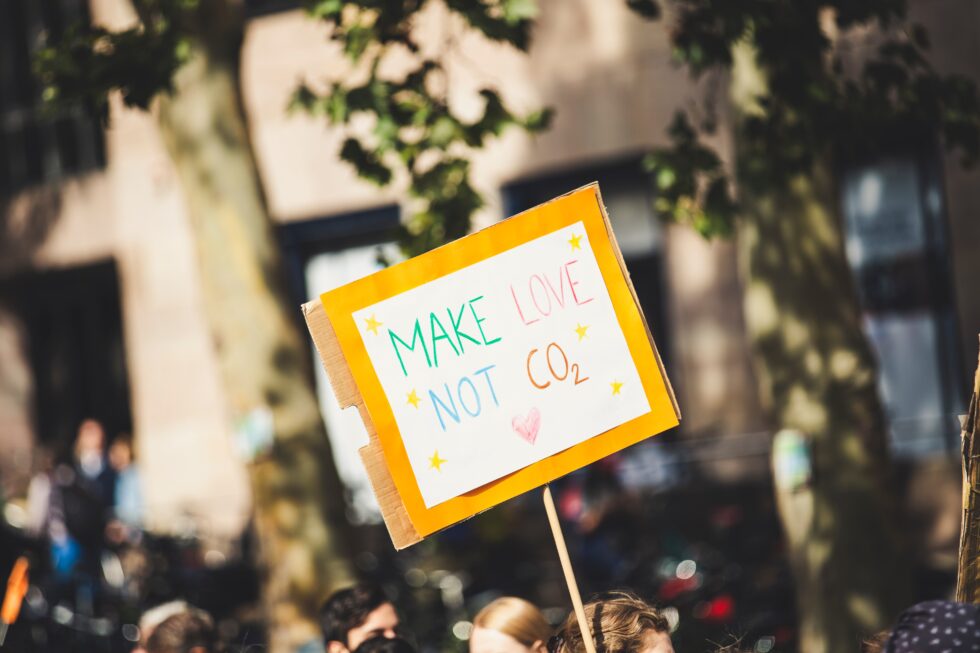For Franziska Schmid economy and ecology are no contradiction. On the contrary: in the future it can only work together! In her monthly column „Let’s think! Green! monthly column, she comments on sustainable developments in the banking and payment sector and calls for more willingness to implement them!
For real? As soon as I transfer money I’m damaging the climate? Yeah, that’s right. It’s just that most people don’t realize it. What does one thing have to do with the other? But sustainable banking is one of many other ways to stop global warming.
Keyword sustainability and banking? What are you thinking about? About sustainable investments? There’s nothing wrong with that at all, but sustainable investments are not the only things that play a role in our personal climate balance – they also – and above all! – our daily consumption. What applies to air travel, car traffic or e-commerce should also apply to banking. A bank should also use transaction data to provide clarity about the individual CO2 footprint!
The economic system burdens the environment
Our current lifestyle and economic system are damaging the climate. Here are some figures: In order to achieve the climate targets, each individual should not consume more than 2.5 tons of CO2 per year. However, the current reality is that this is not the case: Every German consumes on average almost four times as much, namely 9.7 tons of CO2 per year. Of course, the figures are averages, one person emits more, the other less. On a global scale, the value per earthling in 2018 was 4.8 tons of CO2 footprint per capita. So however you twist and turn it around – it’s too much.

CO2 calculator also used in the financial industry
The good news is that every individual can make a positive contribution to achieving the climate targets for 2030, which aim to limit global warming to below 2 degrees Celsius.
The financial industry can also do a lot to participate in this undoubtedly great effort? No one is saying that it is easy, because then everyone would do it. We need to set an example here, and from now on banking apps should also use transaction data to provide clarity about the individual carbon footprint.
It could be so simple, because individual evaluation of the CO2 footprint is not new. CO2 footprint calculators first ask for information about the respective lifestyle and habits. Using this information, users receive an estimate of their personal CO2 footprint.

However, experience shows that only highly motivated people take the trouble to enter their data regularly in order to follow their development. Weak point in the system: The results of the carbon footprint calculators are based only on current and manual data input. This is already too inconvenient for many people.
Therefore: Think user, make it convenient and integrate the measurement of the carbon footprint into the banking app that users already use.
Three reasons why banks should offer this service to their users:
Educate users with CO2 information
Transaction data from banks tell the true stories of daily consumption – provided the customer does not pay cash for his purchases. From the transaction data, estimates of the individual carbon footprint can be derived.
As a result, the manual entry of user data is no longer necessary. Banks have various options for displaying the carbon footprint. They can assign the individual CO2 emissions to categories and thus show the customer which category still has room for improvement. Transactions with high CO2 emissions can be highlighted or the individual development of CO2 consumption can be shown.
2. Showing users climate-friendly consumer behaviour
Banks can achieve higher exposure rates by displaying CO2 data. At the same time, they can show customers actions to improve their individual footprint. This could result in potential new business models for banks.
3. Involve users in sustainable investments
Banks make a significant contribution to the sustainable transformation of the economy.
Data must be transparent in order to create trust
The experience of a Scandinavian bank, which already discloses the carbon footprint of each individual transaction, shows that after initial hesitation, customer interest is growing. But when it comes to the user experience, it becomes clear that there is still room for improvement. Users should be able to understand the calculation of their personal CO2 footprint transparently.
Service providers offering the CO2 service for banks disclose the calculation in a comprehensive open source document. But who reads it? If the calculation is not easy to understand, users often develop only average confidence.
Everyone benefits: Climate, users and banks
Currently, the displayed carbon footprint is based only on transactions booked in the bank account. Users should have the possibility to add non-included data. This is important so that the user receives a result that approximately reflects the CO2 consumption.

For the environment and the climate everyone is, as long as it does not cause any trouble. Every bank that is just beginning to embrace the „trend“ of sustainability must in any case make the CO2 footprint of its customers visible. After all, this is the only way to distract from your own CO2 footprint. Of course, the user has a responsibility, and he or she should be made aware of it. But the lever lies in divestment. Banks must rethink and deal with customer deposits and financial products in a socially acceptable and responsible manner.
Despite limitations and inaccuracies, the CO2 footprint is an important step forward. The evaluation draws attention to something very important: it shows users the effects of their daily consumption on the climate; provided that the figures are communicated to the user in a way that is easy to understand and apply.






